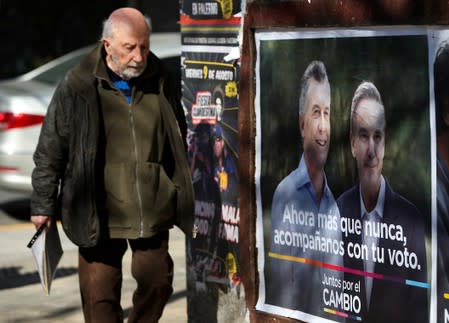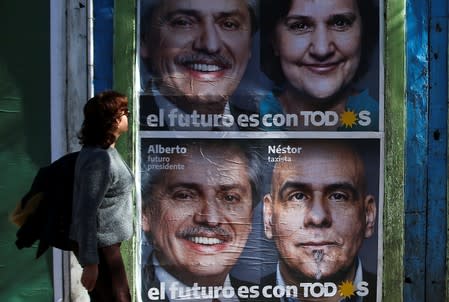Factbox: By the numbers - Deciphering Argentina's presidential primary and election
By Marina Lammertyn
BUENOS AIRES (Reuters) - Argentines will vote on Sunday in the country's presidential primaries, ahead of the general election in October that is seen as a choice between the bitter pill of austerity and the potential comforts of a return to populism.
Voters, investors and traders are looking for ways to read the elections, expected to go to a possible November run-off between conservative incumbent Mauricio Macri and an opposition ticket of moderate Peronist Alberto Fernandez and populist ex-leader Cristina Fernandez de Kirchner.
Here are some key numbers to decipher what is going on.
678,774: The number of votes by which Macri won the second-round run off in 2015 against Peronist rival Daniel Scioli, a difference of around 2.7%. Macri, however, lost both the primary - by over 8 percentage points - and the first round that year.
4 billion: The cost in Argentine pesos of the "PASO" primary election, according to government figures. The general election will cost around 10 billion pesos ($228.16 million).
37%: The proportion of the country's voters who are located in the critical Buenos Aires province area, excluding the city itself. The province with the next most voters is Córdoba with only 8.68% of the electorate.
38: The number of Argentine democratically elected presidents in history, though this rises to 49 if military dictators are included. Since famed leader Juan Peron in the 1950s, there have been only six non-Peronist leaders, none of whom have completed their term. Mauricio Macri would be the first.
80.77%: The average voter turn-out in the 2015 run-off vote.
8 a.m. - 6 p.m.: The voting hours in the primary election on Aug. 11. Results start to trickle out after 9 p.m.
10: The total number of presidential candidates, though only three of them are likely to mount a serious challenge.
130: The number of national deputies in all provinces around the country that voters will choose, including in the City of Buenos Aires. These lawmakers - who make up one of the two houses of Congress - will serve four-year terms until 2023.
24: Voters will also choose senators in two dozen provinces on six-year terms until 2025. These include in Buenos Aires city, as well as the provinces of Chaco, Entre Ríos, Neuquén, Río Negro, Salta, Santiago del Estero and Tierra del Fuego. This will renew a third of the Senate.
33,841,837: The number of voters who could have their say in the elections, according to the official government register.
45%: To avoid going to a second round run-off in November, presidential candidates need to reach 45% of the vote in the first round in October, or get 40% with a 10-point lead over second place.
30 days: The run-off should take place within 30-days of the first round of voting, with a likely date of Nov. 24.
1.5%: Percentage of the vote candidates need to reach in the primaries in order to progress to the general election in October.
($1 = 43.8290 Argentine pesos)
(Reporting by Marina Lammertyn; Writing by Adam Jourdan; Editing by Cynthia Osterman)



